Tom's Hardware Verdict
A production keyboard that feels like a custom build, the Ducky Mecha SF Radiant offers an excellent experience for both typing and gaming. It features sterling build quality and a gorgeous aesthetic you won’t find anywhere else, but the lack of software and hot-swappable switches are disappointing.
Pros
- +
+ Unique aesthetic
- +
+ Sturdy aluminum case
- +
+ High-quality PBT keycaps
- +
+ Compact design for portability and desk space
Cons
- -
Lack of software can be limiting
- -
No hot-swappable key switches
Why you can trust Tom's Hardware
With its beautifully iridescent aluminum case, custom-themed PBT keycaps and excellent typing experience, the Ducky Mecha SF Radiant combines the worlds of custom and production keyboards in a unique marriage of style and substance. At $159, it’s on the expensive side but is one of the top compact keyboards available today, competing nicely with the best gaming keyboards and offering a strong productivity experience. Assuming, that is, that you jive with the two available color ways and lack of software.

Ducky Mecha SF Radiant
Direct Pricing $159.00
Ducky has been popular among enthusiasts for a number of years, but it wasn’t until the launch of the One 2 Mini back in 2018 that it really made it to the mainstream. Since then, it’s released a number of revisions and collaborations with major gaming brands like Razer and HyperX, but the 60% form factor can be difficult to adjust to with its lack of arrows, function keys and navigation buttons.
The One 2 SF, released in 2019, answered these challenges, adding back the arrow keys and a miniaturized nav-cluster, but was quickly overshadowed by the Mecha Mini, Ducky’s widely acclaimed aluminum-chassis take on the One 2 Mini. I was lucky enough to review each of those boards, but the Mecha Mini reigned supreme with its heavy aluminum build that made typing feel so much more satisfying.
The wait for an SF version is finally over with the Mecha SF Radiant. This new keyboard one-ups the Mini version with a brand new finish and themed keycap set for a package that is unlike anything else in the mainstream market today. It isn’t without its limitations compared to the competition, but may just be the best compact keyboard Ducky has produced yet. You’ll have to move fast if you want one for yourself, though, as only 2021 will be made of this limited edition item.

Ducky Mecha SF Radiant Specs
| Switches | Cherry MX Red, Cherry MX Brown, Cherry MX Blue, Cherry MX Black, Cherry MX Silver, Cherry MX Silent Red |
| Lighting | Per-key RGB |
| Onboard Storage | 6 profiles |
| Media Keys | With Fn |
| Connectivity | USB Type-A |
| Cable | 5 feet, (1.5m) rubberized |
| Additional Ports | None |
| Keycaps | Doubleshot PBT plastic |
| Software | None |
| Dimensions (LxWxH) | 12.8 x 4.1 x 1.6 inches (325 x 105 x 40mm) |
| Weight | 1.9 pounds (874g) |
Design of Ducky Mecha SF Radiant
The Ducky Mecha SF Radiant is a compact keyboard that aims to achieve the size benefits of a 60% keyboard while adding functionality closer to a tenkeyless. In fact, the “SF'' in the name stands for “sixty-five” alluding to its 65% layout. This is a bit of a misnomer in actual size but signifies the overall design.
The Mecha SF Radiant follows the Mini by doing away with the numpad and function row, but instead of removing the nav cluster entirely, it shrinks it to a column of three keys on the right side of the board. The buttons to the right of the spacebar and the right shift have also been shrunk to make room for dedicated arrow keys, which is a boon to gamers.
The result is a keyboard that is only slightly wider than a 60% but feels much more usable. It measures 12.8 x 4.1 x 1.6 inches and looks downright small on a full-size desk. The design is ergonomically sound and allows your hands to be spaced at a much natural distance versus spread out with a full-size keyboard. It’s also helpful in first-person shooters where big mouse movements can leave you craving more space. For my part, I most enjoy the clean, minimalist aesthetic of a compact keyboard on my desk.

The layout here is slightly different than many 65% keyboards, however. Rather than featuring four buttons on the right side like the much more traditional Drop ALT, Ducky only includes three and replaces last with an embossed case badge below the bottom key. The amount of keys follows the Ducky One 2 SF, but the addition of a case badge is a direct nod to the custom keyboard community where they have become a staple. The included keys are Delete, Page Up, and Page Down. Like most other keys on the keyboard, Page Up and Page Down also carry secondary functions, in this case Home and End.
Through clever use of function commands, the Mecha SF Radiant manages to pack most of the functionality of a tenkeyless keyboard into its tiny frame. By holding the Fn button, you can access a second layer that provides access to most of the absent keys. With Fn held, the number row will send function commands. Likewise, Print Screen, Insert, and Scroll Lock all have their own dedicated combo buttons, in addition to volume control and even buttons to control the mouse pointer. Holding Fn+Alt opens up the third layer to choose lighting presets, set custom color schemes, and program macros. It’s an impressive array that adds more software-free customization than even programmable gaming keyboards from Razer and Logitech can provide, but since there are no side legends on the keycaps, it may take a while to memorize every keymap.
All of this was true of the original One 2 SF, so what really sets Mecha apart is its metal case and PBT keycaps. The case is solid aluminum and lends the keyboard weight and density which both enhance the typing experience. It’s not the heaviest keyboard I’ve used, even compared to some sixty-percents I’ve tried, but at 1.9 pounds, it’s heavier than it looks. The most striking aspect of it is the iridescent finish which shifts from teal to blue to purple depending on the angle. Ducky has dubbed this version “Ocean” but the Radiant is also available in a green “Emerald” colorway.

The shifting, transforming quality of the keyboard is striking but a bit of a double-edged sword. The keycaps have been carefully curated with three shades of blue and white, but they don’t always match the case perfectly depending on the angle you’re viewing it from. From a normal seated or standing position, it looks great. Viewed from another angle where it appears purple, it can look mismatched against the blue.
The keycaps themselves are excellent. Ducky used its usual PBT plastic, which is more durable and resistant to shine than ABS plastic. The legends are double-shot, which means they’re made of a second piece of plastic that’s bonded to the outer shell, preventing fading or chipping over time.
The walls of the caps are also delightfully thick which lends typing a solidity that’s often lacking from the thin-walled keycaps we see on most gaming keyboards. The legends aren’t shine-through, so the RGB backlight is relegated to an underglow effect that’s more for style than helping you type in the dark. As usual, Ducky includes a selection of alternate keycaps, this time all white. I was surprised to find that the alternate arrow keys actually are backlit, if only slightly. The shape of the arrow has been carved out of the second shot of plastic, allowing them to glow a dull blue in the dark.

Despite the occasional angle-based mismatch, the keycaps ultimately work to tie the look of the keyboard together. The mix of shades of blue definitely brings sea waves to mind. When installed, the injection of white along the right-hand side is reminiscent of a rolling wave. This focus on aesthetics is another quality borrowed from the enthusiast community where look and sound often rival the feel of typing itself.
Pulling back a touch, the Mecha SF Radiant features per-key RGB backlighting. As you might expect from an RGB-enabled board, it features the usual suspects in terms of lighting presets: rainbow wave mode, color cycling, breathing, reactive typing, and more totaling ten preset modes. Five can be color customized using a built-in RGB mixer on the Z, X and C keys or by activating a built-in color palette and tapping your color of choice. This is already fairly impressive, but you can also use the lighting to play a pair of games based on Minesweeper and roulette.
The lighting looks great. The Mecha SF Radiant uses a floating key design that exposes the switch housings. This creates a common but still appealing aesthetic that highlights the illumination from the sides. The LEDs are bright and the switches are mounted on a white plate which allows the colors to blend together into a seamless pool of light. Given the highly-themed keycaps and case, matching lighting is inherently more limited but I found white, tinged blue thanks to the reflection from the keycaps, to look best.
Despite the keyboard clearly targeting the middle ground between custom and production keyboards, it doesn’t offer hot-swap support to quickly change switches. This isn’t unusual for Ducky (it just released its first hot-swappable keyboard last year) but is still disappointing. One of the most fun parts of the hobby is trying out new switches and being able to quickly change the whole feel of your keyboard but that won’t be possible here.

Typing Experience on Ducky Mecha SF Radiant
The Ducky Mecha SF Radiant is available with a wide selection of Cherry MX RGB key switches. Clicky MX Blue, tactile MX Brown, and linear MX Red are all present and accounted for, but you’ll also have the choice of Cherry MX Black, MX Silver, or MX Silent Red. Each of these switches are the updated models from Cherry and are rated for 100 million actuations instead of the 50 million they were previously.
My unit was sent with Cherry MX Silent Red switches. Silent Reds are similar to standard MX Red switches in their linear travel but feature internal dampers to reduce typing noise and cushion bottom-outs. They also have a slightly reduced actuation distance of 1.9 mm and a total travel of 3.7 mm but this isn’t really perceptible in normal use. The actuation force is the same at 45 grams. Silent Reds are not my first choice of switch for this reason but are audibly quieter and a much better fit for typing or gaming at work or with a roommate nearby.
Typing on the Mecha SF Radiant is satisfying on multiple levels. The keycaps are lightly textured and felt nice against my fingers and their thick walls lent the experience a more solid, substantial feel. The pillowy bottom-outs were also very nice and allowed me to use the keyboard at work without disturbing my co-workers.

The aluminum case itself plays an important role in the typing experience. Typing on it feels solid and dense, without much empty space inside the shell. Spring ping, which can sometimes be an issue in reverberant alloy cases, was barely audible and disappeared entirely after I lubed the switches (see our article on how to lube switches, but note that I could not remove these so only lubed them through the top). The density of the case enhanced the switch’s silencing effects.
I only wish I could have tried other kinds of switches, but if experience is any indicator, the case should lend typing a higher pitch with other switch types, though I wasn’t able to test this due to the lack of hot-swap support.

Another high-point was the stabilizers. Like most production keyboards, Ducky used plate-mount stabilizers but they came factory lubed out with absolutely minimal rattle. Gaming companies are catching up in this regard (Corsair and Razer now factory lube their stabs), so it’s good to see Ducky keeping its game strong. Stabilizers can make or break the sound of a mechanical keyboard and the Mecha SF Radiant was very good without the need for additional mods.
Transitioning to the Radiant was easy, and I didn’t lose typing speed making the jump. I went through several rounds of tests at 10fastfingers and averaged 103 words per minute. With my Drop Carina keyboard outfitted with tactile Holy Panda switches, ostensibly better for typing due to their pronounced tactile feedback, I averaged 104 words per minute.
Gaming Experience on Ducky Mecha SF Radiant
While the Ducky Mecha SF Radiant isn’t marketed as a gaming keyboard, it offered a solid gaming experience nonetheless. The form factor seems best suited to high-sensitivity shooters like CS:GO but even playing more relaxed games like Valheim, it was just as responsive and reliable as the Corsair K100 RGB Optical Gaming Keyboard I had on hand to test against.
If you prefer to have the entire keyset available to press at once, the keyboard supports n-key rollover or can be limited to only six simultaneous inputs using a DIP switch on the back. You can also permanently disable the Windows key using a second DIP switch or just while in-game using an Fn+Alt combination. The keyboard also supports customizable debounce delay from 5 - 25 ms to balance key chattering with responsiveness.
My go-to genre is first-person shooters where responsiveness reigns supreme. Even though the Mecha SF Radiant doesn’t boast an 4,000 Hz response rate like the Corsair K100, -- it’s a more standard 1,000 Hz -- I was hard-pressed to feel any difference in responsiveness when comparing the two keyboards0. Playing Doom Eternal, I was able to double-dash through the air, glory kill, and generally rip and tear just as if I were using a keyboard marketed explicitly for gaming.
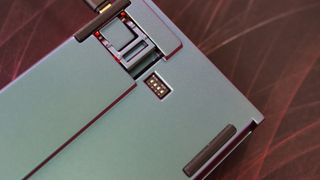
Competitive gamers may really appreciate the condensed nature of theMecha SF Radiant. I’m used to gaming on a compact keyboard, so I spent some time “resetting” with the Corsair K100 before this review. Swapping back to the Mecha SF Radiant made playing Battlefield 5 more comfortable. Having my arms closer together felt immediately more natural. The smaller size also made it easier to manage repositioning the keyboard at a comfortable angle. The Mecha SF Radiant is small enough to move with one hand and doing the same with the K100 was cumbersome at best.
The biggest limitation I found came with World of Warcraft. MMO players and macro fans may find the compact size doesn’t lend itself well to storing lots of macros. The lack of dedicated macro keys is expected on a keyboard designed to save space, but their absence is mitigated by the column of additional keys along the right side. For gaming, these can easily be set to macro commands and thanks to built-in memory support for up to six profiles, it’s possible to maintain different key sets for different games and productivity tasks.
Programming Ducky Mecha SF Radiant
One of the greatest strengths of the Ducky Mecha SF Radiant is also its greatest Achilles heel: the lack of dedicated software. It’s an asset to the keyboard because it can be programmed on any machine, regardless of security limitations, and function the same between devices. That means you won’t be missing features because you can’t install the software. At the same time, it means programming requires multiple steps, more time, and is more limited than competing keyboards with full software suites.
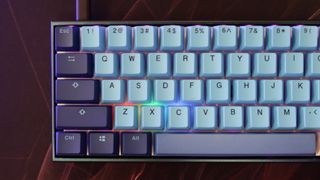
With a few different key combinations, you’re able to record macros and remap keys and even set custom lighting schemes. The keyboard supports five programmable profiles in addition to another that’s locked to default settings, so there’s plenty of latitude to create unique layouts and color schemes to match your different use cases.
In the case of macros, holding Fn+Alt+Tab for three seconds puts the keyboard into recording mode. You press the key you want to remap, enter your string, and press Fn+Alt+Tab a second time to end recording. This can also be used to change the position of different keys, though the keyboard also supports swapping the location of popular remaps like Fn, Ctrl, and Alt using another Fn+Alt+K combination.
For lighting, presets can be selected using Fn+Alt+T. The first five are color locked but the second half all allow you to customize the hue using the built-in palette or RGB mixer. The mixer allows for greater control by tapping Red, Green, and Blue values up to 10 times but takes much longer to dial in. Alternatively, Fn+Alt+Spacebar illuminates all of the keys in a rainbow and you can simply tap the color you want. Creating a custom color scheme is also possible following this same process after holding Fn+Alt+Caps Lock and tapping each key you want to illuminate a given color.

If that sounds like a lot, it is. In comparison to opening a simple app and hitting a “record” for macros or “painting” the keys your color of choice, it’s just not as simple or intuitive. I love that it’s possible to completely customize the board without installing anything, but it demands a level of memorization that is initially frustrating.
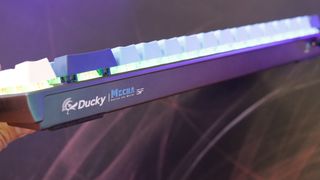
Bottom Line
The Ducky Mecha SF Radiant isn’t the perfect compact keyboard but it is a very good one. The combination of unique looks, excellent build quality, and sterling typing experience make this an excellent choice for users not ready to take the plunge into custom mechanical keyboards. At the same time, the lack of hot-swap support or optional software really are disappointing for flexibility and ease of use. Still, the pros far outweigh the cons here and this is an incredibly solid buy if you enjoy the look.
At $159, the Radiant doesn’t come cheap. If you’re looking for an aluminum keyboard and don’t mind it coming in a larger size, the HyperX Alloy FPS Origins might be a good fit. Alternatively, if you want something compact but that still has all the bells and whistles of a high-end gaming keyboard, the Corsair K70 RGB TKL is definitely worth a look.
If you want the best of both worlds and don’t mind sticking with the switches you start with, the Ducky Mecha SF Radiant is definitely worth considering.

Chris is a regular contributor for Tom’s Hardware, covering mechanical keyboards, peripherals, and content creation gear.








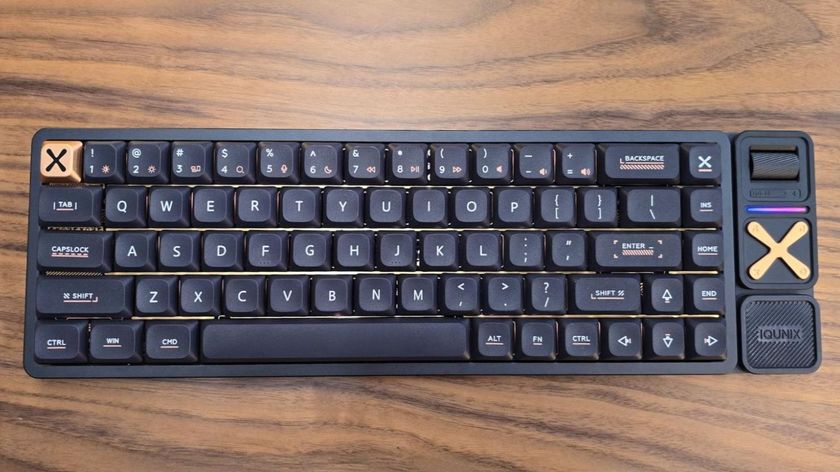
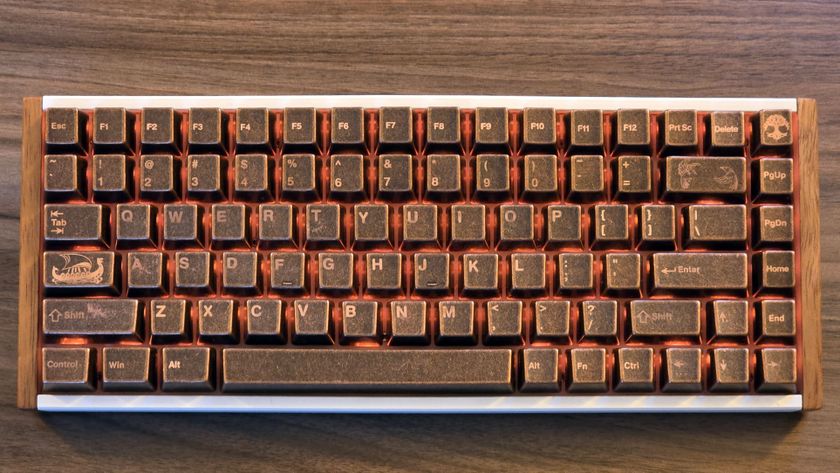



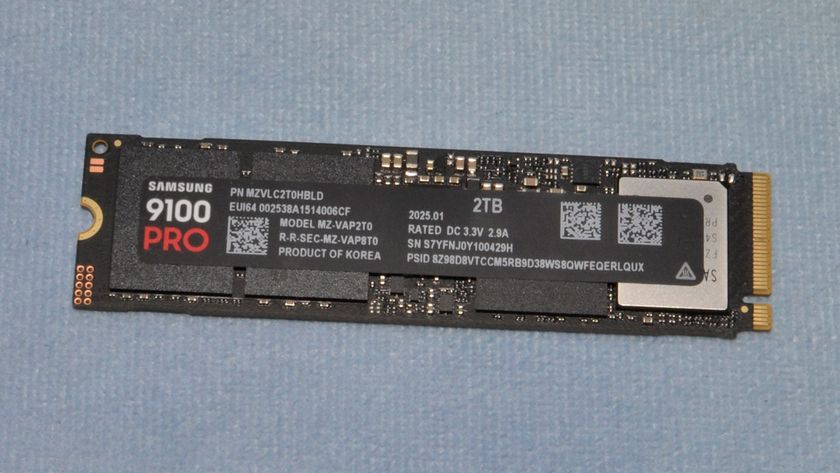


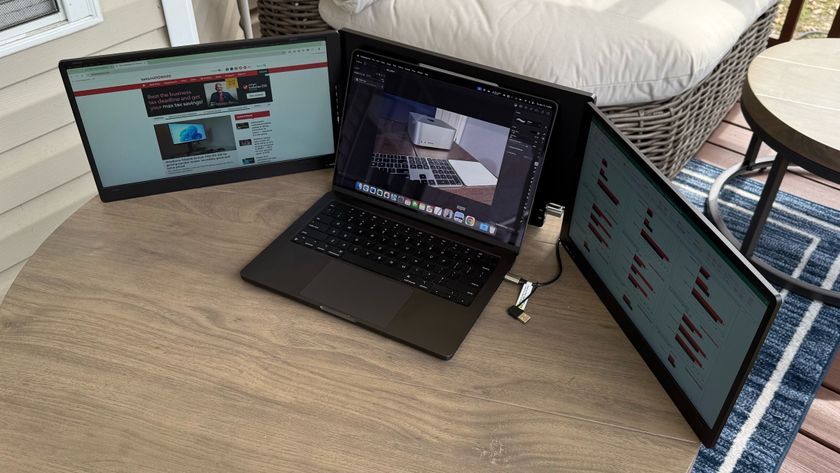

-
Kahless01 not having the backlight through the caps is a weird design decision. im still rocking my anne pro and it helps out a lot vs my regular kb when im gaming in the dark. no more wasted potions or pulling out the wrong weapon.Reply





